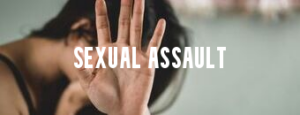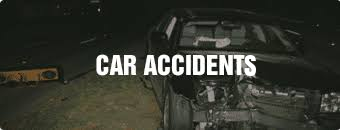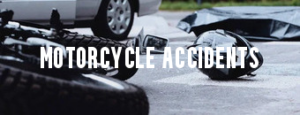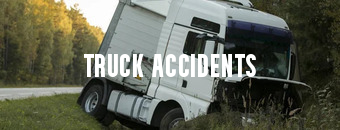- Our Firm
- Personal Injury
-
-
-
Personal Injury Lawyers
-
-
-
-
-
-
Injured in an accident? At Diamond & Diamond, our team of lawyers rely on their reputation in the field and extensive experience in personal injury to provide clients with a dedicated support system over the duration of their case.
-
-
-
-
-
HAVE YOU RECENTLY BEEN INJURED IN AN ACCIDENT?
-
-
-
- Corporate
- Class Action
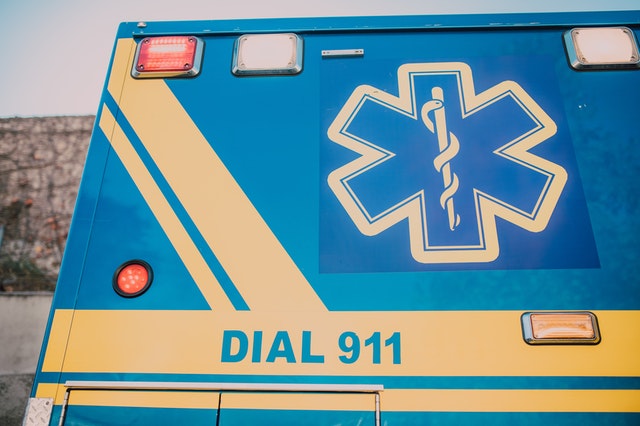
Checklist: What To Do After A Car Accident
No matter how careful we are, car accidents can still occur because traffic is unpredictable.
During the winter months, car accidents are particularly unpleasant due to slick roads and unfavourable weather conditions.
Roadside assistance can get bogged down in poor weather, which makes being responsible on the road vital. Staying informed and prepared can help prevent accidents.
But if the unthinkable does occur, knowing what to do after a vehicle collision will help you avoid unnecessary costs and damages. If you or your loved ones are seriously injured, you may want to contact a personal injury lawyer.
Why It’s Important to Keep a Checklist of What To Do After A Car Accident
It’s important to have an accident protocol for several reasons:
- To provide guidance for how to protect you and your passengers
- To remind you of the pitfalls to avoid and mitigate after a wreck occurs
- To guide you on how to assist injured, trapped, or unstable passengers
- To remind you to call for help and record important information
Keeping an actionable list like this one can help protect you and your loved ones just in case you find yourself in an accident. Knowing exactly what to do is the first step in remaining calm and confident during a crisis.
Keep Calm Immediately After the Car Accident
To avoid further damage after an accident, it’s paramount that you remain calm. Take a minute to breathe. Do a personal safety check and then assess your passengers for injuries.
You should reassure any upset children and direct them to remain calm. This will limit distraction and allow you to deal with the situation efficiently. Keeping a calm repose will allow you to collect the necessary details of the accident for your records.
Survey The Situation
After calming your passengers, turn off your engine, and engage the emergency brake if you are on an incline. Determine as best you can if the car is heavily damaged or if there are any potential hazards in the immediate environment.
You’ll want to confirm that there isn’t a fuel leak or broken glass that could harm you or your passengers. Leaking gasoline could present a fire hazard, and you should vacate the vehicle if you detect it.
When To Get Out of The Car
Check if the immediate surroundings are safe and vacate the vehicle if necessary due to damage incurred.
If there are dangerous scraps or fires nearby, you may determine that remaining in the car is safer. Assess the situation as best as you can.
If you are in a remote location and feel isolated and unsafe, you should set off any flares if you have them. Otherwise, contact the local police or an ambulance if you require assistance.
You may also want to remain in the car until local authorities arrive if you deem it unsafe to exit your vehicle.
Calling For Help
You should call an ambulance if there are serious injuries or if you suspect that someone is seriously injured. The police may already be on their way, but you may also call to make sure they’ll be present at the scene of the accident. Be sure to inform them of your exact location and brief them on the situation. Having local authorities at the scene will be crucial if the other driver becomes aggressive. If you’re unable to contact the police, ask a fellow citizen for help.
Exchange Information With The Other Driver If You Collided With Another Car
You should exchange the following information with the other driver:
- Name
- Registration
- License number
- Insurance information
It’s also important to ask the other driver if they own the car. If it’s company property, you may have to contact and deal with the company that owns the vehicle.
Gather Information About the Car Accident
In all motor vehicle accidents, it’s vital that you gather as much information as possible. Having an accurate set of details regarding the situation will aid you at later court dates and when contracting a lawyer.
Take photos of your car and the scene. Get pictures of the other vehicle. Try your best to relate the sequence of events that led to the crash and clearly demonstrate where the cars collided.
You may want to draw a map or diagram of the scene as additional documentation. Note the date and time, all license plate numbers, witnesses involved, and the location of the accident. Finally, request the witnesses’ contact information.
Inform Your Insurance Company
You should call your insurance company and describe the situation to them. After the briefing, request an estimate of coverage for your situation. Make sure to ask for a direct contact number to a representative should further communication prove necessary.
You may want to give them the insurance company of the other driver, too. This will make it easier for all parties to cooperate and confirm the details of your coverage.
Safety is the number one priority when dealing with a car accident. After assuring everyone’s safety, call a personal injury lawyer from Diamond & Diamond to help you file your car accident claim.
Talk to a Personal Injury Lawyer from Diamond & Diamond
The attorneys at Diamond & Diamond have decades of experience in personal injury claims. You can visit any of our locations across Canada.
If you’re in need of accident assistance, contact Diamond & Diamond via telephone (1-800-567-HURT), or fill out an online contact form to receive a free consultation offer via text.
Before your consult, prepare all related documents pertaining to your case, such as:
- A copy of the police report
- Medical records of related injuries
- Insurance claims and coverage policy
- Your personal insurance information and that of the other driver
- Any maps, diagrams, or photos detailing the accident
PRO TIP:
“Never leave the scene of a car accident unless you require immediate medical attention.”
FAQs on Checklist: What To Do After a Car Accident
Should I get the name of the police officer who responded at the scene of the car accident?
It may help to record the name of the officer present at the scene if you should need additional testimony later. They will be responsible for testifying at your court date, and the case may not be decided in your favour if the officer does not present themselves.
How long after the car accident can I wait before contacting my insurance company?
It’s best to contact your insurance company directly afterward. If you have to wait a couple of hours due to injuries, ask a trusted friend or family member to contact your insurance company for you.
What should I do if, after the car accident, the other driver picks a fight with me?
Do not retaliate, but defend yourself if necessary. Don’t aggravate or irritate the other driver regardless of the comments they make. Record any physical threats made and present them at a later court date.
Need a Lawyer?
We are here 24/7 to address your case. You can speak with a lawyer to request a consultation.
1-800-567-HURTGet started with a free consultation
OUR TEAM
- Ishmeet Sandhu
- Nolan Bachmann
- Annamarie Demaj
- Jeffrey Hum
- Tofunmi Adeyeye
- Alessia De Gasperis
- Amandeep Chawla
- Jeremy Tsoi
- Kimiya Razin
- Shir Zisckind
- Gray Sinden
- Shelly Bard
- Christian Brown
- Daly Canie
- Tanveer Sohal
- Prianka Virdi
- Noah Brownstone
- Justin Kaminker
- Harinder S. Bhatti
- Craig Yargeau
- Kiran Birk
- Amit Singh
- Andrei Teju
- Maria Zahid
- Matthew Douglas
- Jacob Elyk
- Harry Gill
- Kristina Olivo
- Egi Bano
- Cam Woolley
- Charles Thompson
- Alexandra McCallum
- John Sime
- Allan Cocunato
- Patrick Poupore
- Erika Henderson
- Marina Korshunova
- Brandon Handelman
- Regeena Alapat
- Ryna Kim
- Natalia Poliakova
- Isaac Zisckind
- Manpreet Bhogal
- Mathura Santhirasegaram
- Nikolai Singh
- Sandra Zisckind
- Jeremy Diamond
- Michael Blois
- Darryl Singer
- Nadia Condotta
- Tinashe Madzingo
- Megan Armstrong
- Veronica D’Angelo
- Corey J. Sax
- Scott Tottle
- Steven Wilder
- TJ Gogna
- Jillian Carrington
- Joshua Himel
- Simon Diamond
- Cory Rubin
- Simon Mariani
- Brandon Greenwood
- Basil Bansal
- Nastassia Ivanova
- Tania Fleming
- George Laloshi
- Patrycja Majchrowicz
- Diana Iakossavas
- Dior Africa
- Alex Ragozzino
- Liana Saccucci
- Richard J. Chang
Head Offices
Main Offices
Barrie
Main Office
168 Bayfield Street
Calgary
Main Office
1331 Macleod Trail SE, Suite 645
Edmonton
Head Office
4246 97 Street NW, Unit 103
Halifax
Consultation Office
1701 Hollis St
London
Main Office
256 Pall Mall St, Suite 102
Oshawa
Consultation Office
50 Richmond Street E, Unit # 108 B
Ottawa
Main Office
955 Green Valley Crescent, Unit 315
Sudbury
Main Office
31 Larch Street, Unit 300
Timmins
Main Office
120 Cedar Street South, Unit 002A
Toronto
Head Office
255 Consumers Road, 5th Floor
Vancouver
Head Office
1727 West Broadway, Suite 400
Windsor
Main Office
13158 Tecumseh Rd. E. Unit 3B
Additional Areas Served
Ontario
- Ajax
- Alberta
- Aurora
- Barrie
- Belleville
- Bowmanville
- Brampton
- Brantford
- Brockville
- Bracebridge
- Bradford
- Burlington
- Burnaby
- Calgary
- Chatham
- Cobourg
- Collingwood
- Cornwall
- Durham
- Edmonton
- Elliot Lake
- Etobicoke
- Georgetown
- Guelph
- Hamilton
- Huntsville
- Kanata
- Kelowna
- Kingston
- Kitchener
- Leamington
- London
- Markham
- Milton
- Mississauga
- Muskoka
- Niagara Falls
- Newcastle
- Newmarket
- North Bay
- North York
- Oakville
- Orangeville
- Orillia
- Oshawa
- Ottawa
- Owen Sound
- Parry Sound
- Perth
- Peterborough
- Pickering
- Prince Edward County
- Richmond
- Richmond Hill
- Sault Ste Marie
- Sarnia
- Scarborough
- St. Catharines
- St. Thomas
- Stouffville
- Sudbury
- Surrey
- Thunder Bay
- Timmins
- Toronto
- Uxbridge
- Vancouver
- Wallaceburg
- Waterloo
- Welland
- Whitby
- Windsor
- Woodstock



